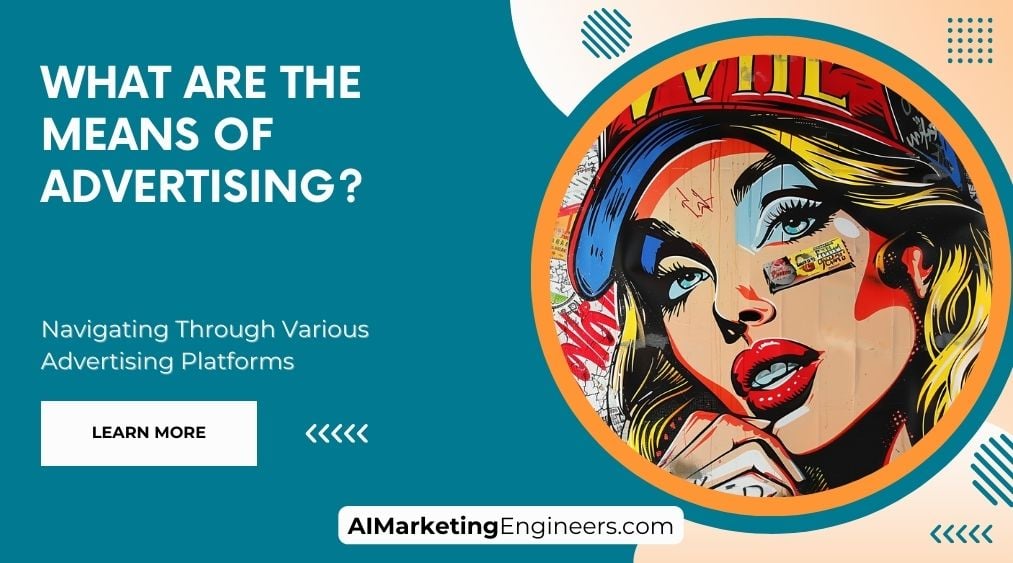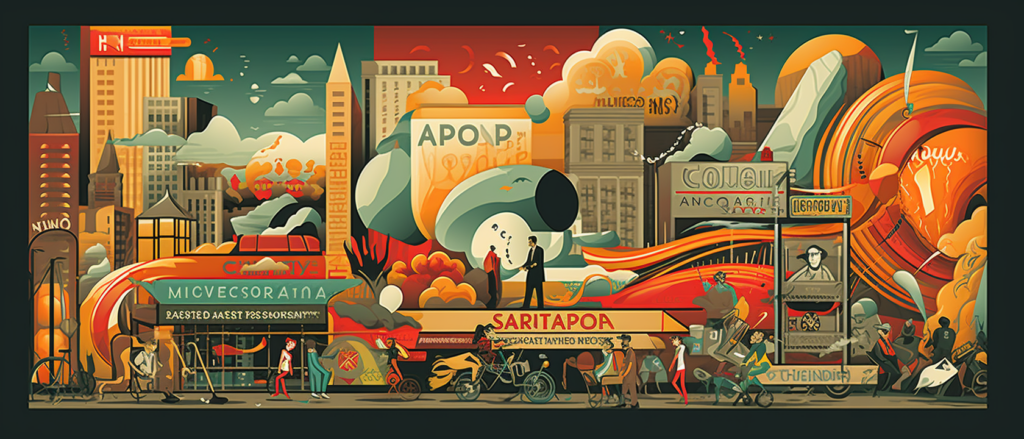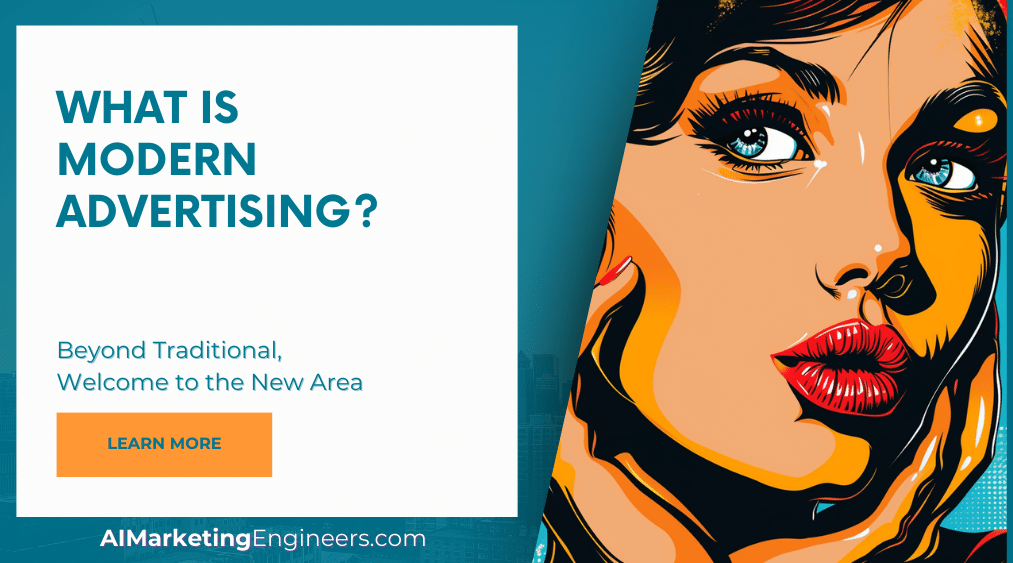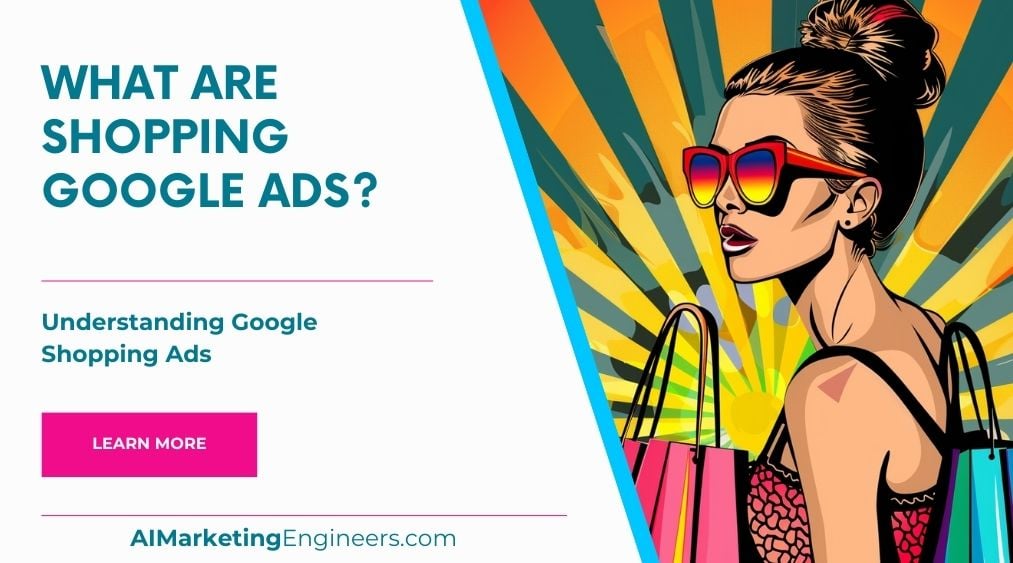Key Takeaways
✅ Advertising is essential for businesses aiming to thrive in today’s noisy market. From understanding your target audience’s preferences to setting a streamlined budget and establishing precise marketing goals, advertising spans a spectrum of techniques. Each method’s success is contingent upon these factors, so tailor your efforts wisely for optimal ROI.
✅ Traditional advertising methods have stood the test of time, but their impact is diminishing in a digitally-driven world. Yet, for specific demographics and niches, mediums like print, broadcast, outdoor, and direct mail can still yield a surprising amount of engagement and customer loyalty if executed creatively.
✅ Digital advertising is the new frontier. It ranges from search engine campaigns to captivating social media ads. With digital, you can measure every click and tweak campaigns for peak performance, maximizing your budget in ways traditional ads never could. We’ll reveal how to harness these tools for superior brand growth.
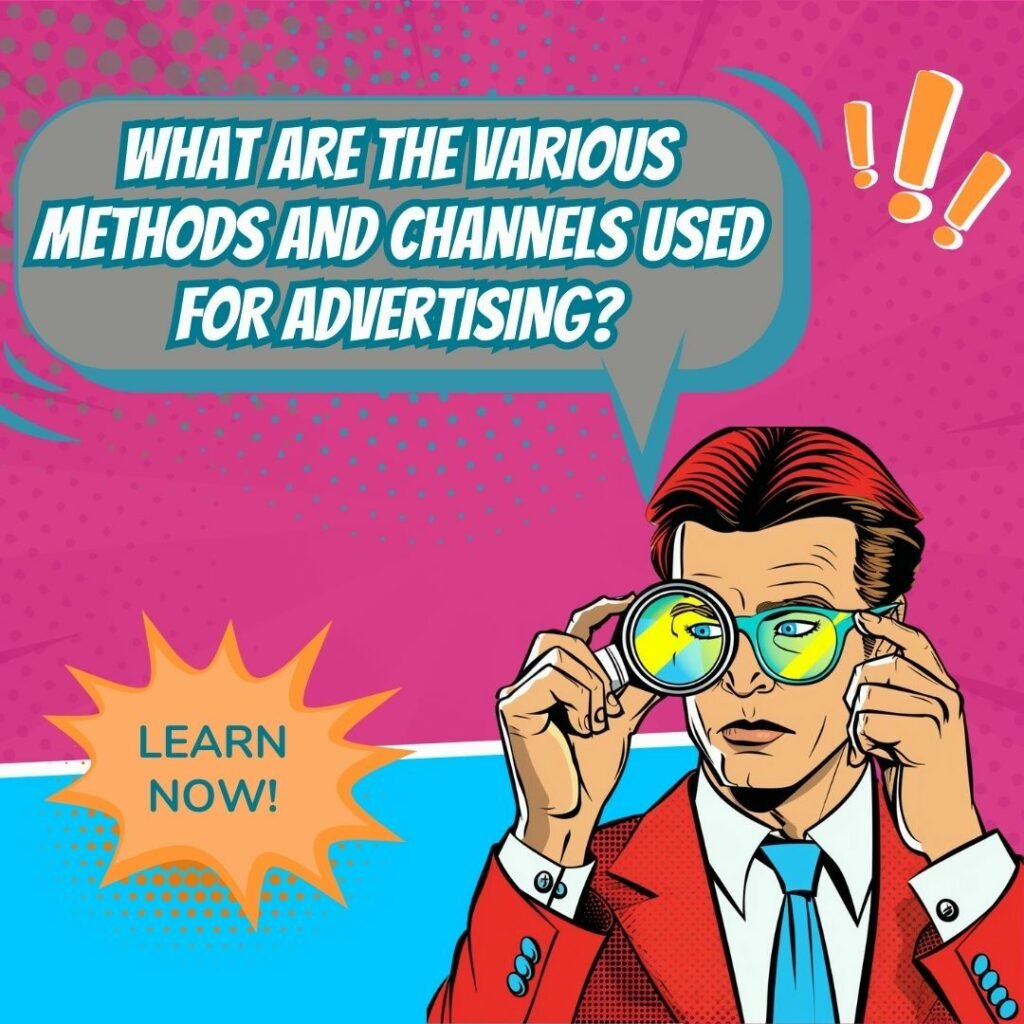
Introduction
What does it take to make your brand stand out in a world bombarded with messages vying for attention? Why is choosing the right advertising avenue not just smart, but essential, for your business?
In this guide, we’re taking a deep dive into the various paths available for promoting your brand. Traditional print and broadcast ads have painted our worlds for decades, but with the dawn of the digital age, fresh platforms have emerged. Are you ready to harness them? Join us as we explore everything from eye-catching billboards and magazine spreads to the new-age digital realm of clicks, likes, and shares.
And it’s not just about being seen. In the intricate dance of promotion, the goal is to connect, to resonate deeply with your audience so that they not only see you, they remember you. What’s the secret sauce to achieving this? That’s exactly what we’re going to find out.
By the end of this comprehensive journey, we’ll have uncovered actionable insights and groundbreaking information that could redefine your advertising approach and, potentially, transform your bottom line. Prepare to be enlightened with strategies that bring results and build a lasting relationship with your audience. Let’s get started, shall we?
Top Statistics
| Statistic | Insight |
|---|---|
| Global ad spending: Expected to reach $774.30 billion in 2021, a 12.6% increase from 2020. (Source: eMarketer) | This rise signals robust recovery after a tough year, showing business confidence in advertising’s value. |
| Digital advertising: Digital ad spending projected to be 64.4% of total media ad spending worldwide in 2021. (Source: eMarketer) | This shift to digital reflects changing consumer habits and the importance of an online presence for businesses. |
| Social media advertising: Expected to grow 11.4% in 2021, reaching $102.83 billion. (Source: eMarketer) | With social platforms becoming intertwined with our daily lives, advertising here is a no-brainer for brands looking to connect. |
| Mobile advertising: Forecasted to reach $290.02 billion in 2021, 51.8% of total digital ad spending. (Source: eMarketer) | The dominance of mobile advertising emphasizes the need for mobile-friendly content as consumers are always on the move. |
| Video advertising: Projected to grow 14.9% in 2021, reaching $59.25 billion. (Source: eMarketer) | As people devour video content, ads in this format can be wildly effective—think YouTube, Instagram Stories, and TikTok. |
Traditional Advertising Methods
Have you walked through a city street and had your eyes land on a giant billboard for a new smartphone? That’s traditional advertising in action. It’s all about print ads in newspapers and glossy magazines, radio spots that catch your ear between tunes, and TV commercials that enter living rooms every day. Outdoor ads like billboards and transit posters catch people on the go, while direct mail still finds a way to your mailbox with catalogs and brochures. These methods might seem old-school, but they have staying power because they’re proven to work. They offer tangible, in-your-hand appeal that digital methods can’t always match.
Digital Advertising Channels
Turn your attention to the screen and you’ll find the dynamic world of digital advertising. It starts with search engine advertising, where businesses like yours can bid for space at the top of Google’s search results. Then, there’s social media advertising, where platforms like Facebook and Instagram let you target your audience with precision. Have you ever seen those banner ads on websites you visit? That’s display advertising—a digital billboard of sorts. And don’t forget about mobile advertising, popping up in apps and text messages. With people glued to their screens, these channels are gateway to attract and engage potential customers where they spend most of their time.
Influencer and Content Marketing
Let’s talk about the power of influence and storytelling. Influencer marketing taps into people with dedicated followers to amplify your product. Picture a popular Instagrammer wearing a brand’s new fashion line. That’s influence in action. Then there’s content marketing, the art of creating videos, blog posts, and infographics that doesn’t blatantly advertise but offers value, entertainment, or education. It’s about becoming a trusted voice in your space, so people come to you when they’re ready to buy.
Email Marketing
Consider the last email newsletter you actually read. What made it stand out? Effective email marketing involves more than just hitting send. It’s about crafting personal, intriguing messages that could range from a quick deal alert to a drip campaign that nurtures customers over time. The magic happens when email content feels like it’s speaking directly to you, thanks to personalization and segmentation strategies that divide the audience into groups based on behavior and preferences.
Event and Experiential Marketing
Imagine shaking hands at a conference or being wowed at a product launch—this is the realm of event and experiential marketing. Companies use trade shows or exhibitions to showcase what they’re all about. Ever walked into a pop-up shop or participated in an interactive brand activation? That’s experiential marketing in full swing, creating memorable moments that connect you to a brand on a personal level. It’s a way to step away from screens and engage with potential customers face to face.
With each method, it’s about finding the right fit for your story and your audience. Is your crowd a traditional type that enjoys reading the morning paper? Or are they constantly scrolling through Facebook, in which case, a targeted ad could work wonders. Perhaps they crave personal interaction, pointing towards a pop-up event. It’s not just throwing messages out there and hoping for the best—it’s about crafting the right ones that hit home. What does your audience truly value, and how can you meet them there? That’s the heartbeat of successful advertising.
AI Marketing Engineers Recommendation
Recommendation 1: Go where the eyes are: Social Media: With billions actively using social media, platforms such as Facebook, Instagram, and TikTok have become the town squares of our digital lives. Leverage social media advertising by targeting your ads based on detailed demographics, interests, and behaviors. Did you know, according to a Sprout Social report, the average user spends about 2 hours and 25 minutes on social media per day? That’s a lot of time your ad could be in front of potential customers. Use this data to creatively craft campaigns where your audience already hangs out.
Recommendation 2: Invest in storytelling through video content: Videos aren’t just entertaining; they’re a way for people to form a personal connection with your brand. Video advertising is soaring, with a Cisco study predicting that by 2022, 82% of all online content will be video. Not convinced? YouTube reports mobile video consumption rises 100% every year. Create videos that tell your brand’s story, showcase your products, and resonate with your audience’s hopes and fears. Make it real, make it emotional, and watch engagement soar.
Recommendation 3: Use data to personalize your advertising: Long gone are the days of one-size-fits-all advertising. Now it’s all about personalized advertising. Do you know that according to Epsilon, 80% of consumers are more likely to make a purchase from a brand that provides personalized experiences? Use analytics tools to gather data on your customers’ behavior, preferences, and engagement. Then, tailor your ads to fit individuals or specific segments, whether through email marketing, retargeting campaigns, or personalized website content. The right message to the right person at the right time can turn a maybe into a definitely.
Relevant Links
Maximize Your Affiliate Marketing Earnings
Uncover persistence and profit: Discover the Secrets to Successful Affiliate Marketing in 2024
The Future of SEO Marketing
Rank higher and smarter: Advanced SEO Marketing Strategies to Elevate Your Online Presence
Digital Marketing Trends to Watch
Stay ahead of the curve: Top 10 Digital Marketing Trends You Can’t Ignore in 2024
Leveraging AI for Marketing Success
Embrace tech for impact: How to Utilize AI in Transforming Your Marketing Strategy
Unlocking the Power of Data in Marketing
Make informed decisions: Mastering Data-Driven Strategies with Advanced Marketing Analytics
Conclusion
Well, you’ve joined me on quite the journey through the world of advertising, haven’t you? Advertising methods are really the colors in a brand’s palette, each one adding a different shade and feeling to the masterpiece that is a successful marketing campaign. From the nostalgic charm of traditional methods like those eye-catching billboards to the buzzing, interactive world of digital ads, there’s a method to match every business’s stride and style.
Do you ever wonder if there’s a secret sauce to nailing the perfect ad campaign? Well, if there is, it’s definitely knowing your audience. Yes, it’s about understanding where they hang out, what they care about, and how they like to be spoken to. It’s about being there, not just in the physical mailbox, but in their inbox, their social media feeds, maybe even in that podcast they can’t stop talking about.
But here’s the catch – advertising isn’t a ‘set it and forget it’ sort of deal. It’s alive, always shifting, always throwing new trends and technologies into the mix. As businesses, staying alert and flexible is the game. Test out those new social media platforms, try on some content marketing for size, send out a few emails, and pinpoint what really resonates with your audience.
What does all this mean for you? It means opportunity, my friend. It means broadening your horizons, trying new things, and yes, sometimes stepping out of that comfort zone. It’s about making your brand a living, breathing part of your customers’ lives. So ask yourself, will you play it safe, or will you embrace the exciting, ever-evolving landscape of advertising to tell your brand’s story in ways that not only stand out but connect?
FAQs
Question 1: What are the primary means of advertising?
Answer: The primary means of advertising include traditional media like television, radio, print (newspapers, magazines, billboards), and outdoor advertising, as well as digital media such as social media, search engine marketing, email marketing, and online display ads.
Question 2: What is the difference between traditional and digital advertising?
Answer: Traditional advertising refers to offline methods of promoting products or services, such as television, radio, print, and outdoor ads. Digital advertising, on the other hand, involves online channels like social media, search engines, email, and websites. Digital advertising often allows for more precise targeting, real-time analytics, and better measurement of ROI.
Question 3: How can I choose the most effective means of advertising for my business?
Answer: To choose the most effective means of advertising, consider your target audience, budget, and marketing goals. Identify where your audience spends their time, whether it’s online or offline, and allocate your resources accordingly. Additionally, conduct market research and analyze the performance of your advertising campaigns to make data-driven decisions.
Question 4: What is the role of social media in advertising?
Answer: Social media plays a significant role in advertising, allowing businesses to connect with their target audience, build brand awareness, and drive engagement. Social media advertising enables businesses to target specific demographics, interests, and behaviors, and provides valuable analytics to measure the performance of their campaigns.
Question 5: How can I measure the effectiveness of my advertising campaigns?
Answer: To measure the effectiveness of your advertising campaigns, track key performance indicators (KPIs) such as impressions, clicks, conversions, and return on investment (ROI). Use analytics tools to monitor the performance of your campaigns and make data-driven decisions to optimize your advertising strategy.
Question 6: What is programmatic advertising, and how does it work?
Answer: Programmatic advertising is the use of automated systems to buy and sell digital ad space in real-time. It allows advertisers to target specific audiences based on demographics, behaviors, and interests, and optimize their campaigns for better performance. Programmatic advertising uses algorithms and artificial intelligence to automate the ad buying process, making it more efficient and cost-effective.
Question 7: What are the benefits of influencer marketing?
Answer: Influencer marketing involves partnering with individuals who have a large following on social media to promote your products or services. The benefits of influencer marketing include increased brand awareness, credibility, and engagement, as well as the ability to reach a specific target audience. Influencer marketing can also provide valuable content for your social media channels and improve your search engine rankings.
Question 8: How can I create an effective advertising budget?
Answer: To create an effective advertising budget, consider your overall marketing goals, target audience, and the channels you plan to use. Allocate your resources based on the expected ROI of each channel, and regularly analyze your campaigns to optimize your budget. Start with a smaller budget and gradually increase it as you gain insights into what works best for your business.
Question 9: What is the importance of brand consistency in advertising?
Answer: Brand consistency is essential in advertising, as it helps to build trust and recognition among your target audience. By maintaining a consistent brand identity, messaging, and visual style across all advertising channels, you can create a strong and memorable brand that resonates with your audience.
Question 10: How can I stay up-to-date with the latest advertising trends and technologies?
Answer: To stay up-to-date with the latest advertising trends and technologies, follow industry news and publications, attend conferences and webinars, and connect with other professionals in the field. Additionally, continuously test and experiment with new advertising channels and strategies to stay ahead of the curve and optimize your marketing efforts.
Academic References
- O’Shaughnessy, J., & O’Shaughnessy, N. (2004). Advertising and Consumer Psychology. Oxford University Press. This seminal book takes us on a journey through the intricate relationship between advertising and the human mind. It unpacks why we might feel a sudden urge to buy something after seeing a particularly emotive commercial, and how our personal values and beliefs can be so deeply intertwined with persuasive advertising campaigns.
- Schultz, D. E., Lowrey, T. M., & Barnes, B. E. (2009). Integrated Marketing Communications: Putting It All Together. Cengage Learning. In a world where we’re bombarded with ads from all angles, this textbook makes a case for a harmonious promotional strategy. Imagine every piece of an advertising puzzle – TV, newspapers, online banners – all talking in one clear voice; that’s what Schultz, Lowrey, and Barnes argue can really make a brand stand out in our cluttered marketplace.
- Shimp, T. A. (2019). Advertising, Promotion, and Other Aspects of Integrated Marketing Communications. Cengage Learning. Shimp provides a Swiss Army knife of advertising wisdom, arming readers with a comprehensive understanding of tools ranging from the tried-and-true billboards to the influencer-filled realms of social media. It’s all about using the right tool at the right time for the most impactful messaging.
- Aronson, D. (2012). Advertising Theory. Sage Publications. Here’s where things get deep: Aronson’s book probes the very essence of advertising and its broader societal implications. Have you ever wondered if the ads we see every day are just reflecting our culture or actively shaping it? This work dives into the powerful role advertising plays in our worldview and everyday decisions.
